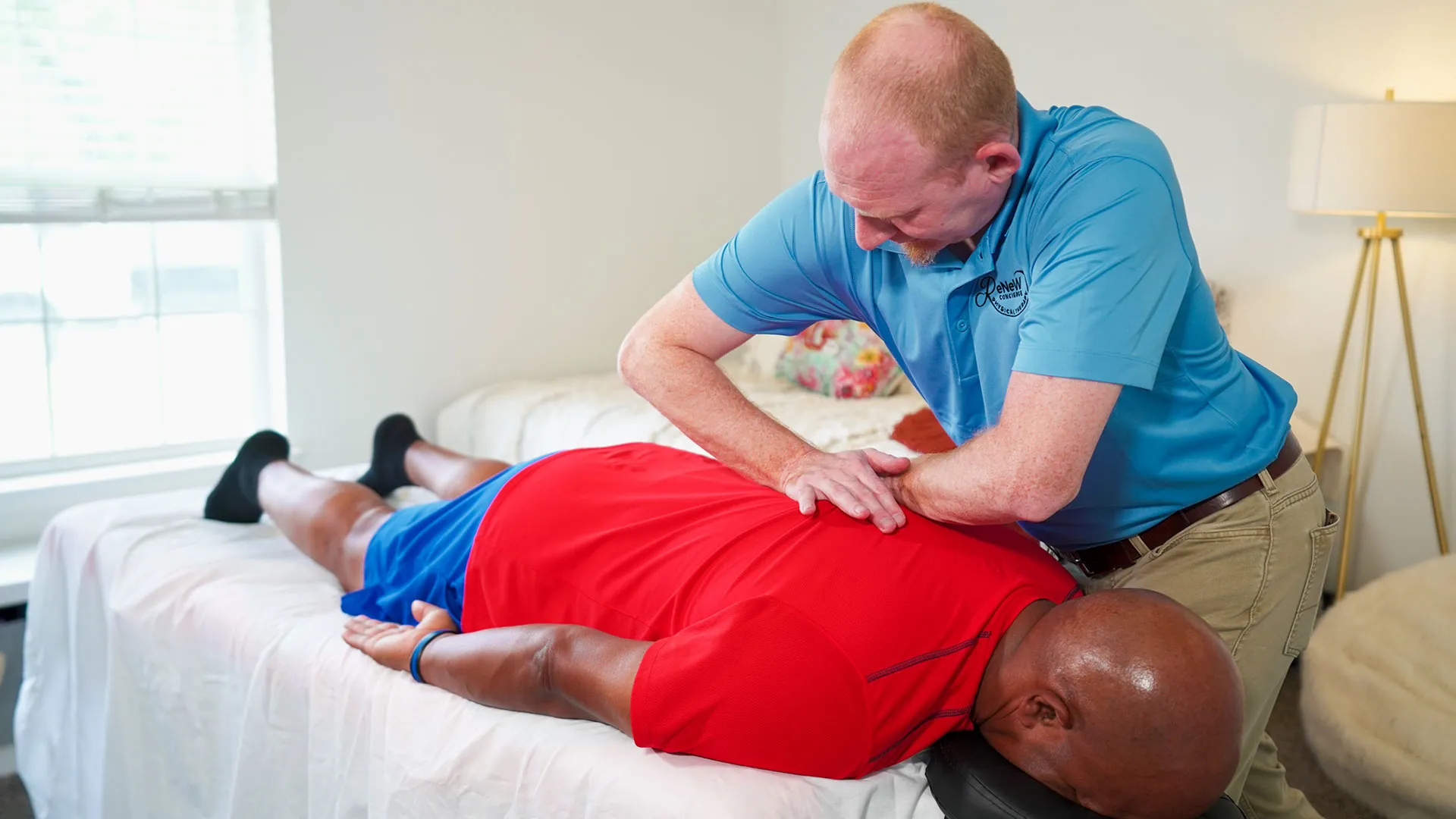When you have back pain, visiting a chiropractor might be your first choice, but physical therapy may be a better option. Physical therapists are also trained in spinal mobilization. What sets us apart from chiropractors is that we take a more holistic approach to identifying and treating back pain which includes mobilization to varying degrees and including soft tissue treatment to our plan of care. We have helped our patients find lasting freedom from chronic back pain.
What is spinal mobilization?

Spinal mobilization involves passive movement of spinal segments through the skilled application of force in a specific direction to improve mobility and range of motion at that level of dysfunction. The physical therapist may use their hands to mobilize the affected joint, or use other tools such as straps to achieve the desired effect.
For more information on our spinal mobilization techniques and if you feel you might benefit, please contact us today.
What should I expect from spinal mobilization?
A thorough evaluation will be performed on all patients who present with chronic or acute pain. To diagnose accurately, we will assess, treat then re-evaluate everything level by level. The assessment will be holistic and include your joint mobility, range of motion, pain levels, muscular tension, posture and fascial health.
We will be able to create a personalized treatment plan for you based on the results of our examination and the information we gather from you regarding your past and current medical history. With ReNew PT, this plan will almost certainly include some level of manual therapy and spinal mobilization if you are dealing with spine pain. This is simply because it has been proven to be effective in treating a wide range of conditions.
Comfortable and loose-fitting clothing is important for spinal mobilization sessions. The therapist must be able to feel or see the particular joint that he/she is mobilizing. We respect your privacy and will not ask for any sensitive information. Your physical therapist will give you clear instructions on how to lie down during the session and what you can expect to feel. Also, you will be given advice about what to do afterward to maximize your experience and avoid recurring pain.
We will also help you to optimize the spinal mobilizations’ effects. This could include additional services such as therapeutic exercises for strengthening and range-of-motion, modalities and postural and neuromuscular rehabilitation.
Can spinal mobilization be used to treat my condition?
Sometimes, a joint may become irritated, swollen or misaligned due to injury, stress, poor posture or repetitive movement or age-related wear and tear. This can cause the joint to become painfully stiff or unable to move properly. As a result, nearby structures, such as muscles, tendons, and ligaments, may become tightened or injured to try and stabilize the injured joint. This can cause muscle weakness, nerve damage and even impingement.
Spinal mobilization may not be right for everyone. Our skilled and experienced physical therapists will help you decide if spinal mobilization is right for you. Our physical therapy team is able to successfully manage the following conditions with spinal mobilizations:
- Whiplash
- Acute and chronic neck, upper back and low back pain
- Herniated discs
- Locked up spinal segments and misalignments
- Sciatica and other types of nerve impingement syndromes
- Arthritis, especially of the spine, shoulder, elbow, hip, knee, and hip.
- Acute or chronic muscle tendonitis
- Medial and lateral epicondylitis (golfer’s elbow or tennis elbow)
- Plantar fasciitis
Many other injuries and conditions are caused by joint issues, including muscle strains and ligament damage. We strongly recommend that you consult your physical therapists if you have any type of chronic or acute dysfunction. You may not realize that your joints are contributing to your pain.
Why use spinal mobilization?
There are hundreds of joints within your body. They come in many sizes and types, such as the “hinge” joint in your elbow, the “ball and socket” joint in your hip or the “saddle” joint in your thumb. The articulating surfaces of two or more bones form joints. They require a combination of stability and mobility to function effectively and comfortably. It is important to note that joints can be supported by many physiological structures, such as capsules, ligaments and tendons, cartilage and muscle fibers. All of these structures can become damaged and may benefit from physical therapy, including spinal mobilization.
The type, frequency, speed and magnitude of spinal mobilization depend on many factors. These include the purpose of treatment, the type and location of the joint and your individual anatomy. spinal mobilizations can reduce pain, improve the range of motion and enhance the quality of joint movement.
Talk to one of our physical therapists right away!
Do you wonder if spinal mobilization is right for your needs? Our team invites you to schedule an appointment to discuss the wide variety of physical therapy services that we offer. It is possible to get pain relief without the use of drugs. Start your journey to healing today.
